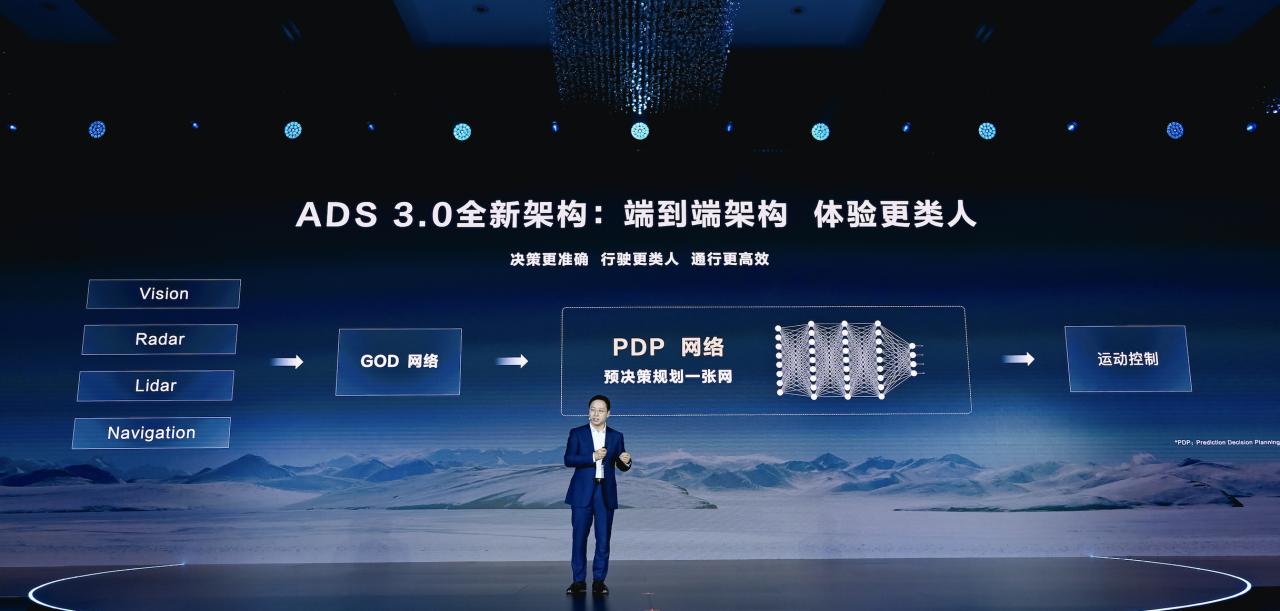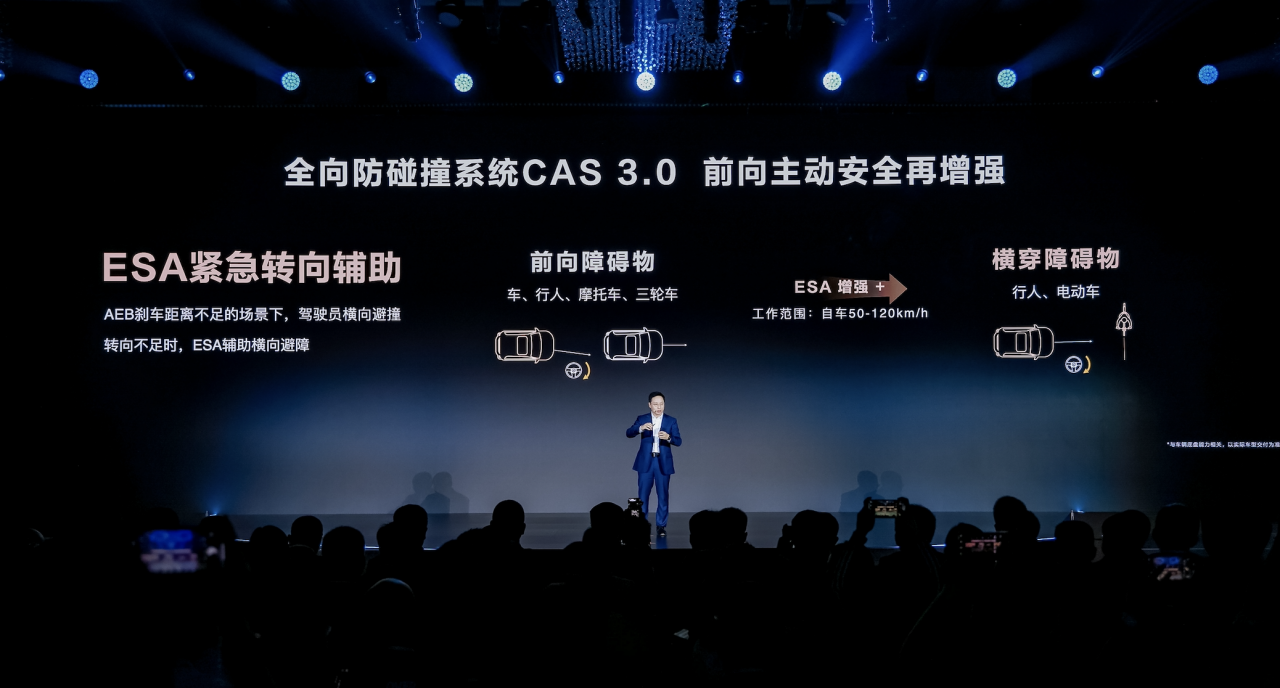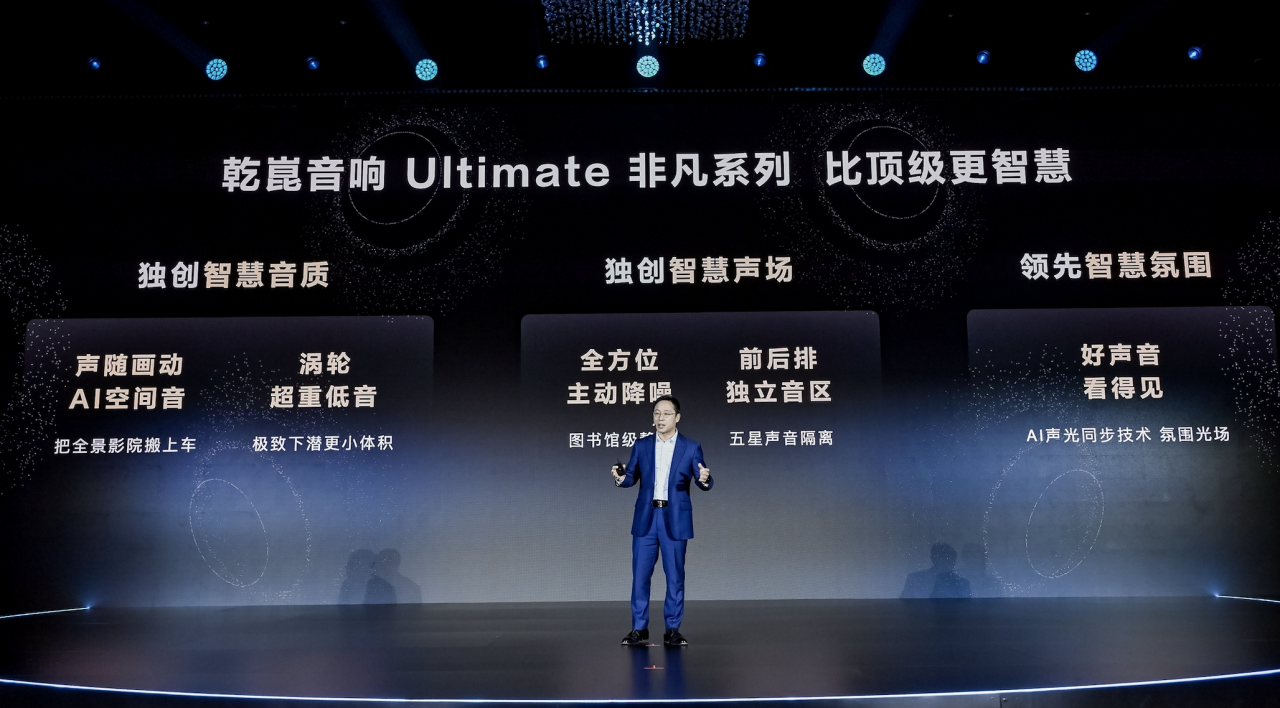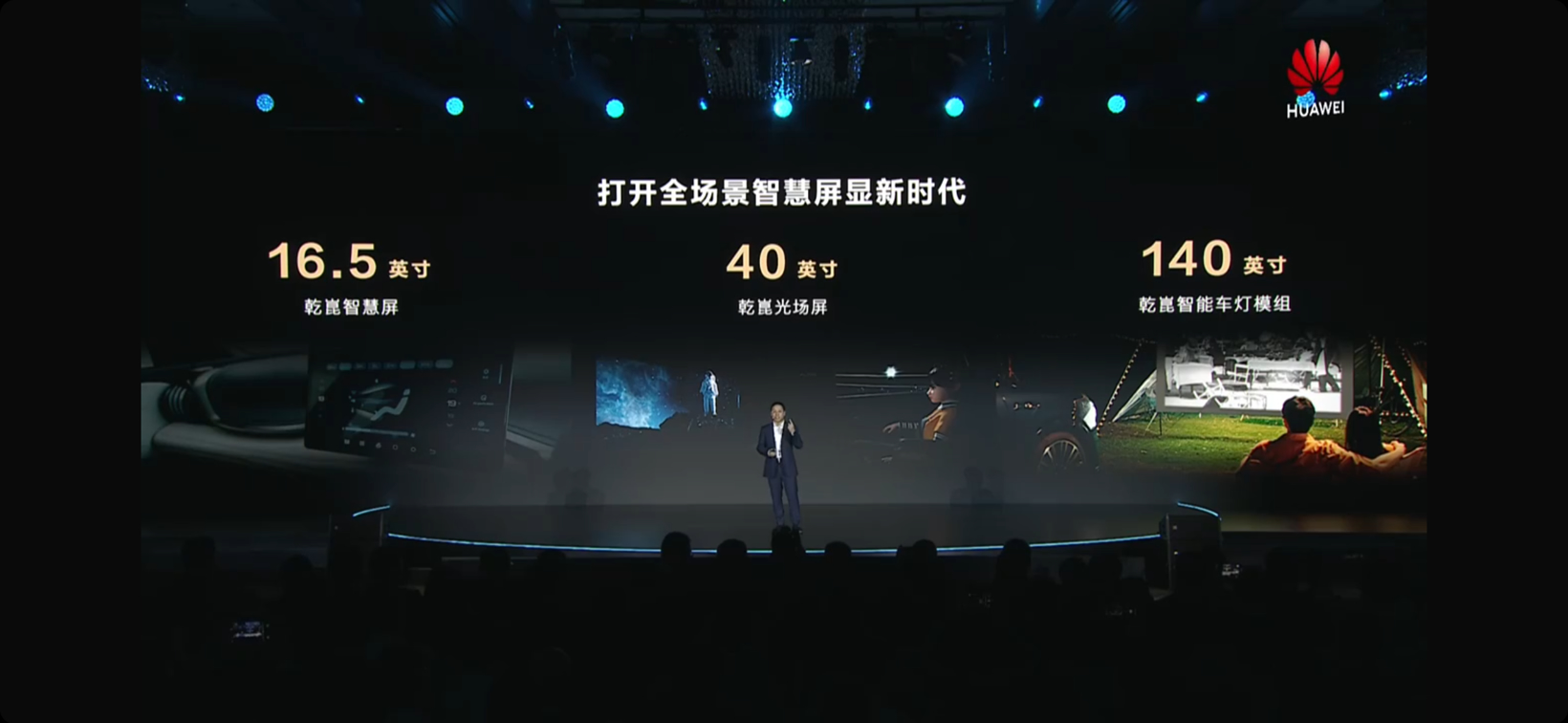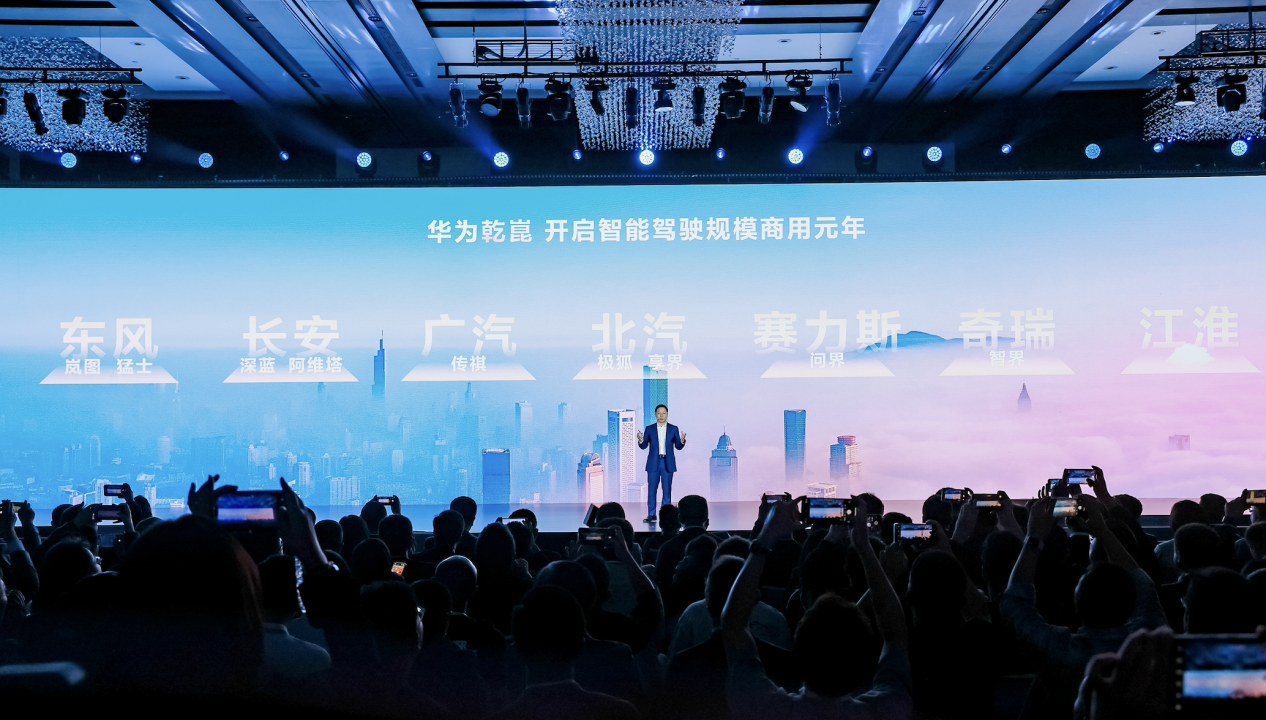In just one year, Huawei’s smart driving has evolved again The extreme internal competition in the Chinese automotive industry is characterized by the increasing speed of updates and iterations. Huawei, leading the trend, has once again introduced the latest smart car solutions. On April 24th, Huawei’s Car BU launched the new brand of smart car solutions, “Qiankun”, bringing three major upgraded solutions: “Qiankun ADS”, “Qiankun Car Control”, and “Qiankun Car Cloud”. At the same time, the Hongmeng cockpit also received a comprehensive upgrade. Ten new products were simultaneously released, including Qiankun ADS 3.0, 4D millimeter wave radar, Qianwu engine, iDVP2.0, and Qiankun sound system. What are the highlights of the three major solutions and the upgraded Hongmeng cockpit released by Huawei’s Car BU this time?
Taking one step closer to end-to-end Huawei ADS 3.0, the industry’s first intelligent driving system to achieve full scene coverage from parking space to parking space and commercial use of parking valet service, takes the lead further. Looking back at the evolution of Huawei ADS, the first generation integrated perception BEV network, able to identify whitelist obstacles; the second generation, released last April, introduced GOD and PCR networks on the basis of BEV, solving the core issue of “understanding objects and roads”, achieving “drive everywhere”.
And this year’s release of Qiankun ADS 3.0 completely eliminates BEV and instead adopts GOD network, which can not only recognize whitelist and irregular obstacles, but also perceive road structure and scene semantics, enhancing its understanding of the physical world. With the support of PDP predictive decision-making and planning network, the efficiency of the solution has greatly improved, with a pass rate of over 96% at complex intersections. It is also worth mentioning that Qiankun ADS 3.0 is equipped with 4D millimeter-wave radar, increasing detection distance to 280 meters, improving accuracy from 20cm to 5cm; and reducing latency from 185ms to 65ms. This not only extends the field of view and accuracy, but also greatly improves reaction speed, further enhancing driving safety and experience. The intelligent parking function has also become more outstanding. Compared to 2.0, parking speed has increased by 20%, and the average time for intelligent parking assistance APA has been shortened to 38 seconds, with adaptability expanded to narrower parking spaces and lanes. In addition, the new VPD parking valet function has been added, achieving “car find person.” Currently, this function has been piloted in 48 parking lots and 43 communities, with plans to open 100 parking lots, 2000 communities, and office parking lots by the end of 2024.
Interestingly, the Gan Kun ADS 3.0 solution will also introduce the SE version, which can achieve functions such as LCC+ lane cruise assistance in urban areas without using lidar, while also supporting intelligent parking assistance. The advantage of this version is lower cost, but with Huawei’s powerful algorithm capability, it can still cover more complex highway and urban road conditions. Gan Kun ADS 3.0 has improved algorithm efficiency by 100 times through software and hardware collaboration, integrating decision-making and prediction, upgrading and strengthening from four aspects: architecture, safety, scenarios, and parking. In the future, Gan Kun ADS will be upgraded to end-to-end architecture, providing a more intelligent and secure intelligent driving experience. However, Jin Yuzhi emphasized that Huawei will still fully retain lidar in perception hardware.
Analysts say laser radar is now the mainstream solution for advanced driver assistance systems in China, especially with the significant cost reduction. Domestic automakers are adopting end-to-end solutions for intelligent driving development, with sensor fusion still being the mainstream approach. “Laser radar can compensate for algorithmic weaknesses.” The previous generation ADS 2.0 has been praised as a “textbook” example in the industry, with its main advantage being the ability to handle complex scenarios without relying on high-precision maps or continuous AI training optimization. The upgraded Qinkun ADS 3.0 is expected to further solidify Huawei’s leading position in intelligence. HarmonyOS cockpit interaction is now more intelligent. This time, HarmonyOS cockpit has made breakthroughs in intelligent human-machine interaction, audio, and display. After integrating the in-car Qianyu large model, the Qianwu engine makes voice interaction more natural and fluent, closer to the experience of conversing with a person. Therefore, the HarmonyOS cockpit 4.0 version can recognize individuals by voice and provide personalized recommendations. Additionally, with the application of millimeter-level eye positioning and centimeter-level full-body positioning technology in the cockpit, the system can actively identify the driver’s position and accurately capture gesture controls, providing users with a more outstanding human-machine interaction experience.
In terms of audio experience, Huawei has launched the “Qiankun Sound System”, including three series: Vitality, Excellence, and Extraordinary. The number of speaker groups is 15, 23, and 33 respectively, supporting active noise reduction, independent front and rear sound zones, sound following picture movement, etc. The independent sound zone solution has a sound energy isolation rate of up to 99%, far exceeding the industry average of 23%. Currently, the Excellence series has been installed on the WENJIE M9.
Another high-tech feature on board is the XSCENE light field display screen, with large format and ultra-high resolution for immersive visual experience, effectively relieving motion sickness and visual fatigue. Paired with intelligent headlight control, outdoor projection screen size can reach 140 inches, adding fun to in-car entertainment. It is understood that the XSCENE light field screen has been fully launched, with over 1000 stores nationwide supplying in the future.
In addition to human-machine interaction, the hardware and software platforms such as GanKun car control and car cloud services have been fully upgraded. The new generation GanKun iDVP 2.0 car digital platform achieves high-performance computing, lightweight operating system VOS, service-oriented and personalized experience through modular design and layered architecture, significantly improving software iteration efficiency. On the hardware side, the GanKun car control module integrates MCU, MPU, LSW, PHY, IO, etc., forming a five-in-one car control SOC, increasing communication capability by 4 times, reducing latency by 10 times, and achieving reliability and security of over 99%. The XMOTION 2.0 motion collaborative control system effectively improves vehicle stability and passenger comfort, helping to alleviate motion sickness. Currently, Huawei’s Hongmeng cockpit has been installed on over 200 car terminal applications, with 86% of commands completed by voice control. Jin Yuzhi stated that Huawei aims to be “comprehensively leading” in technology. At the current stage, it is possible for Huawei to maintain its pace of technological innovation. Goal: Install 500,000 cars within the year During a communication meeting with media such as Gasgoo Auto, Jin Yuzhi predicted that by 2024, the cumulative sales of vehicles equipped with Huawei’s GanKun smart car solution will exceed 500,000 units. Currently, the GanKun solution has been confirmed to be applied to models of 10 brands from 7 major car companies, including not only the four members of the Hongmeng Smart Alliance such as BAIC, SAIC, Chery, and JAC, but also brands like Dongfeng Mengshi, Lantu, Changan Deep Blue, Avita, and GAC Trumpchi. This fully demonstrates Huawei’s influence in the field of intelligent connected vehicles.
After the hot sales in the Ask series market, Huawei’s smart car solution has gained more recognition from car companies. Data shows that as of January 2024, Huawei has shipped over 3 million sets of smart components, 7 strategic models have been launched, and over 300 ecological partners have jointly nurtured the smart car ecosystem. Huawei’s ability to quickly iterate a complete solution like this not only relies on continuous investment but also on its strong R&D team support. Since the establishment of the Car BU, Huawei’s cumulative R&D investment in the smart car field has exceeded 30 billion yuan, with an R&D team of 7,000 people. As the only enterprise besides Tesla to achieve self-developed software and hardware full stack, Huawei has completed a comprehensive layout from decision-making to chips to software.
In addition, Huawei leverages its massive user base from smartphones and smart homes, as well as its cross-industry “ecosystem” advantage, to empower its presence in the automotive field. Data shows that by the end of 2023, the number of HarmonyOS devices will exceed 800 million, with over 2.2 million developers, and more than 2500 partners and 7000 ecosystem products. This unique advantage has helped Huawei build a strong “moat” for its smart car solutions. So far this year, Huawei’s HarmonyOS smart cars have sold 105,000 units, leading among new energy vehicle companies. With the sales of cooperative models such as the Chery Jetour S7 and the BAIC Arcfox S9 climbing, and the continued growth of the WENJIE series, sales of Huawei’s HarmonyOS smart cars alliance are expected to continue to rise. The Gaishi Automotive Research Institute predicts that sales of Huawei’s HarmonyOS smart cars this year are expected to reach around 600,000 units. With the continuous expansion of its business scale, Huawei’s Car BU is expected to achieve profitability this year. Some industry insiders jokingly say that in the automotive industry, “Huawei is the real hexagonal warrior.”

